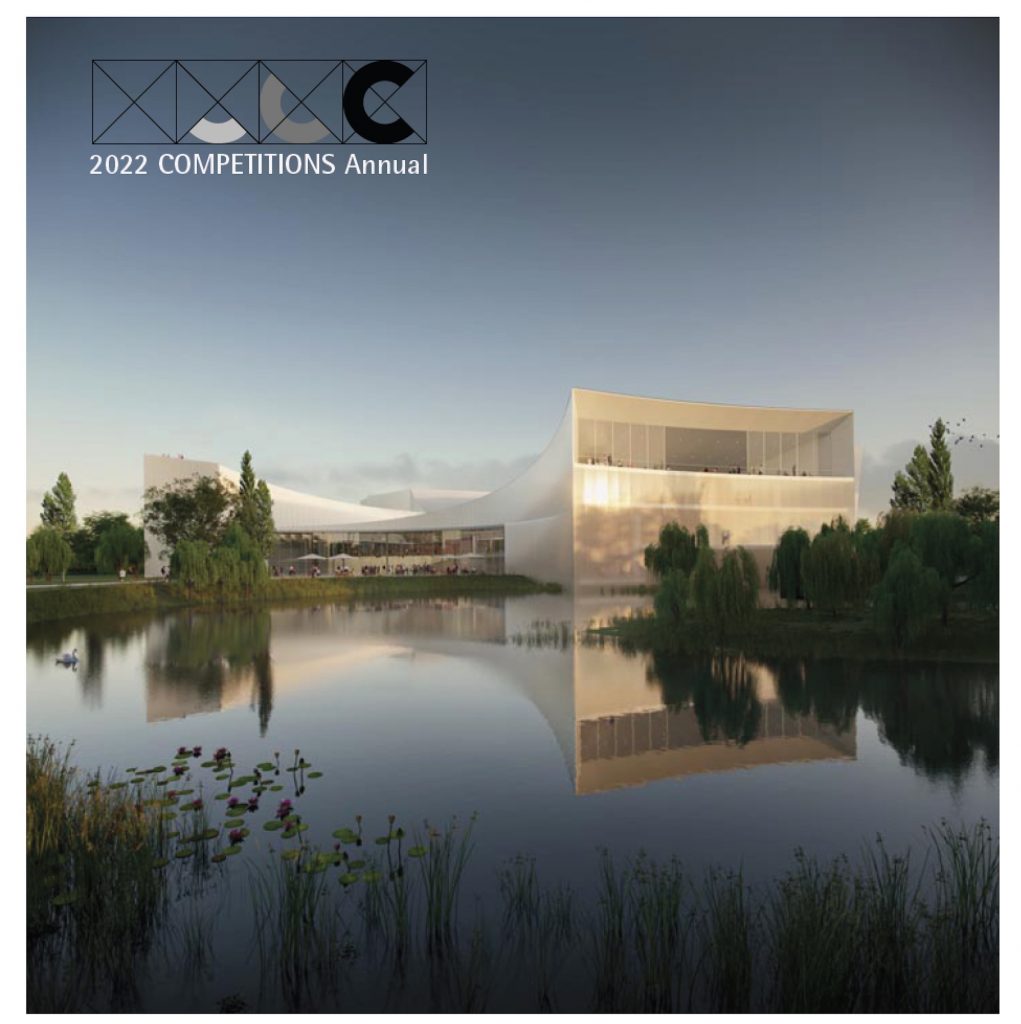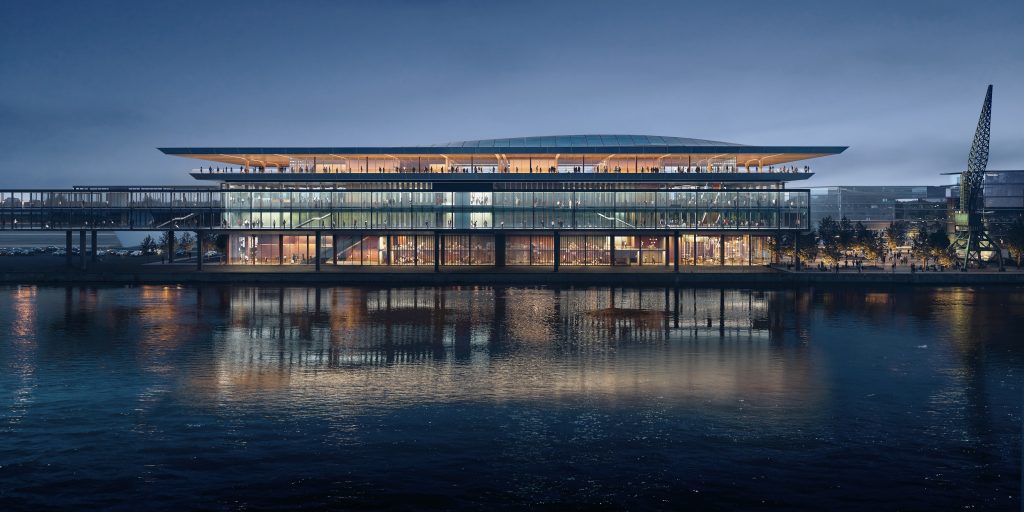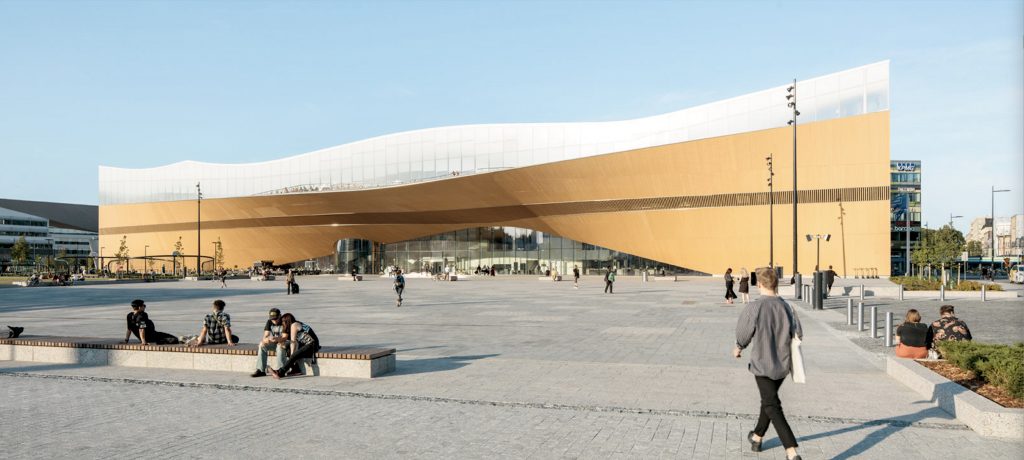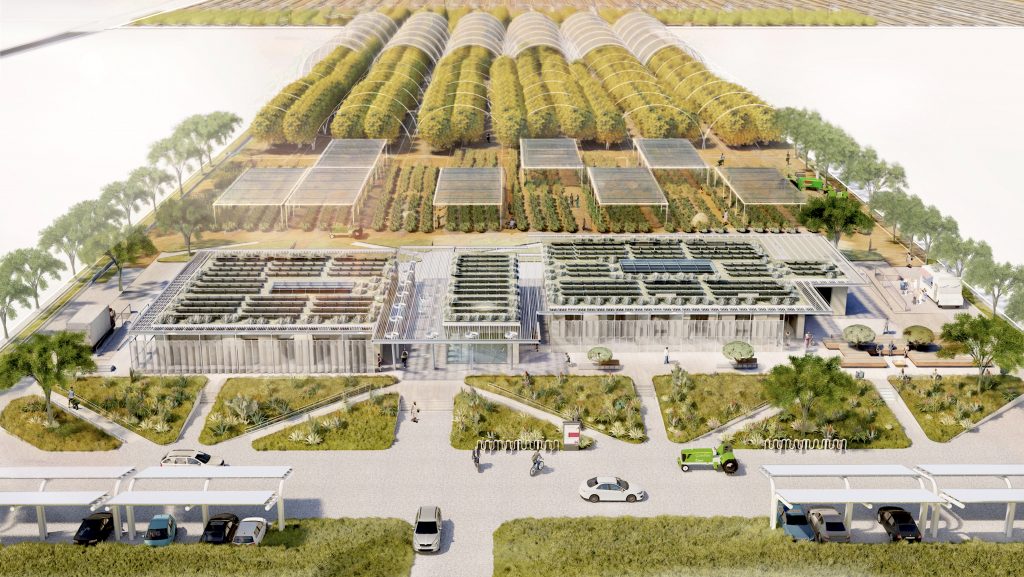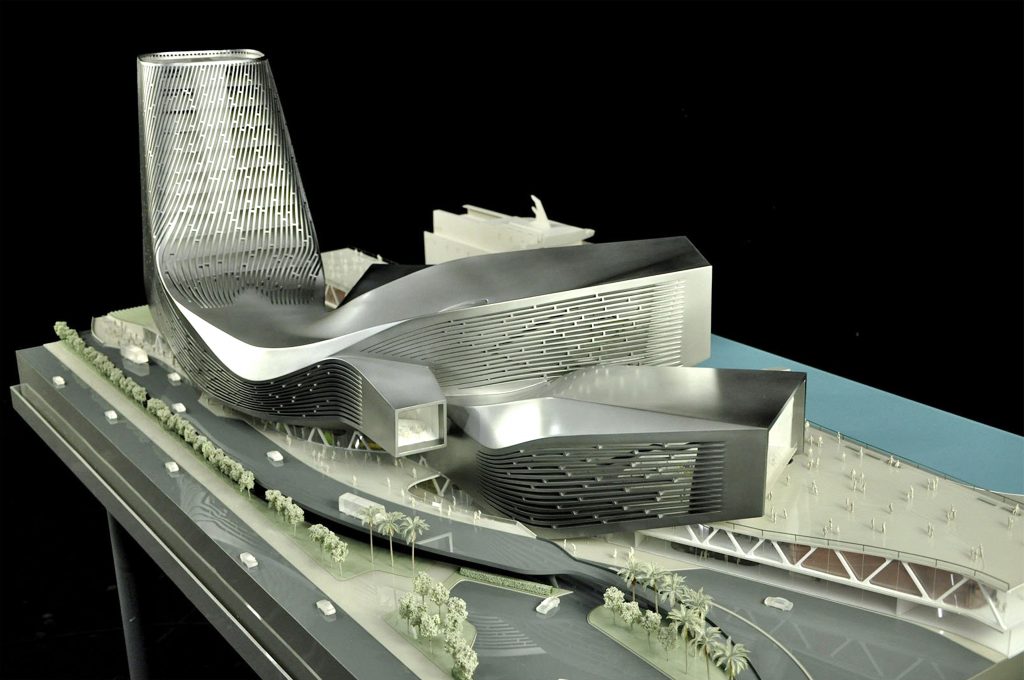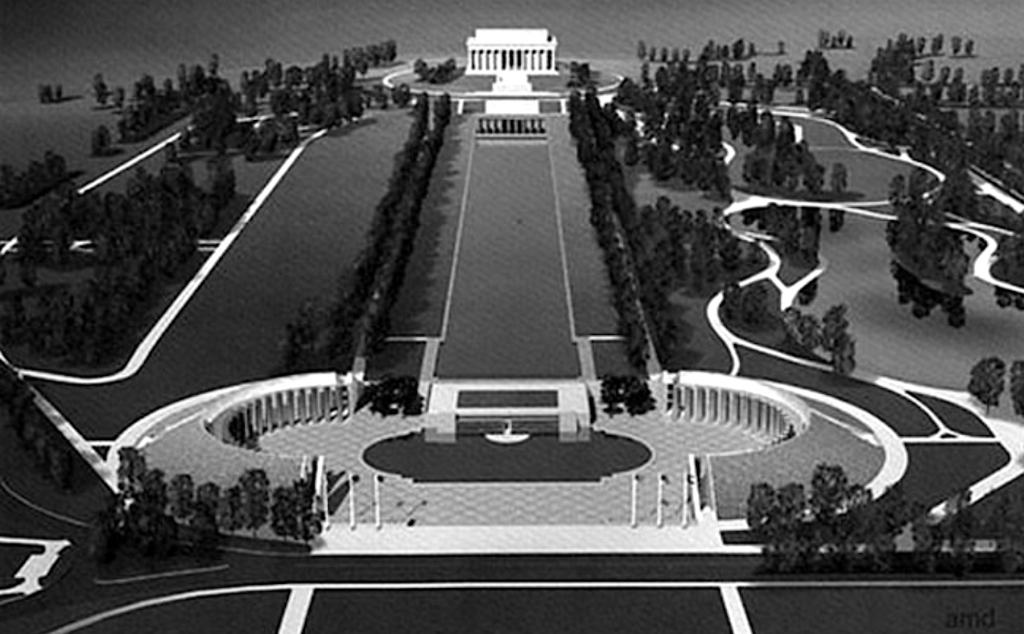
Winning Stage 2 design for the WWll Memorial Competition ©Friedrich St. Florian
The guidelines for the administration a design competition are not a closely held state secret. Still, leading up to the announcement of a design competition for the World War II Memorial, some in the military seemed to think otherwise. In early 1993, an AIA staff person, Frimmel Smith, was appointed to serve as a source of information on the subject. Shortly after President Clinton signed a bill in 1993 authorizing the establishment of a memorial, several military officers appeared in Frimmel Smith’s office at the AIA headquarters, announcing they would like to learn about competitions. Were they asleep during the exemplary administration of the Vietnam Memorial competition, which had resulted in an highly acclaimed product? Or, with another war memorial in the offing, did they not want to be caught off guard this time and again be bystanders as was the case when an enlisted man, Jan Scruggs, was the initiator of the Vietnam Memorial?
The initial decision was to turn to the U.S. General Services Administration (GSA) to run a competition. Here, in contrast to the Vietnam Memorial jury, there was undoubtedly a tacit understanding that high-ranking military personnel be part of the decision making process: they did ultimately appear as jurors. The next stage in the decision making process at first appeared to be an invited competition. When the word got out to this effect, there was a general outcry, and the client agreed to an open competition. Here one should note that the GSA had been staging invited competitions for government projects, i.e., courthouses, federal buildings, etc., but with a committee of their peers leading the decision making process. In the case of the WWII Memorial, it was going to be different. Generals and Admirals were going to be looking over the shoulders of the design experts. In marked contrast to the Vietnam Memorial Competition, which generated a huge number of entries, the WWII Memorial competition only ended with 400 entries, with multiple entries coming from one well established architecture firm (Richard Meier). Although the initial design by ultimate winner, Friedrich St. Florian, in the first stage looked somewhat like it may have come out of an Albert Speer playbook, in any case it evolved into the Beaux Arts design we have today. The WWII veterans certainly deserved something more imaginative, and one might still wonder if a rocky approach to the administration of the process contributed to the end result. In its aftermath, two important competitions on the mall, for Dwight Eisenhower and The National Mall Competition were result of participation by invitation only.
Although the WWII Memorial competition ended up being an open event, the circumstances surrounding its implementation suggested that clients were increasingly focusing on exercising more control over the decision-making process.. Today most competitions for large projects are preceded by a call for qualifications, thus eliminating any notion that small emerging firms might be possible winners. In Europe, most competitions are also now preceded by a call for qualifications; but once chosen, the compensation for participation can be very substantial. But there, the numbers of participants is often larger, and compensation numbers are more attractive than one finds on this side of the ocean. Unfortunately, the trend in the U.S. is to suggest that such events are no longer competitions, but more like requests for proposals. We were recently told by a PR firm that they anticipated that a competition would be staged for a new performing arts centre in Sarasota, Florida. Later we learned that “This is not going to be a competition,” though the presentation requirements were substantial. We saw this again in the case of an extension to the architecture/construction building at the University of Florida.
One of the most egregious examples of this phenomenon was the competition staged for the Obama Library/Center in Chicago. In submitting a request to the Obama Foundation for publication of all of the finalists designs, we were told that “this was not a competition.” All this in spite of the fact that the a call for proposals for two sites looked very much like what one might expect of a competition (https://competitions.org/2016/08/the-obama-library-competition-what-would-olmsted-have-said/). Because the Obama Foundation did not provide the finalists, with substantial compensation for their efforts, the submission requirements almost found one firm filing for bankruptcy and rumors of another finalist claiming they spent close to $1Million on the project.
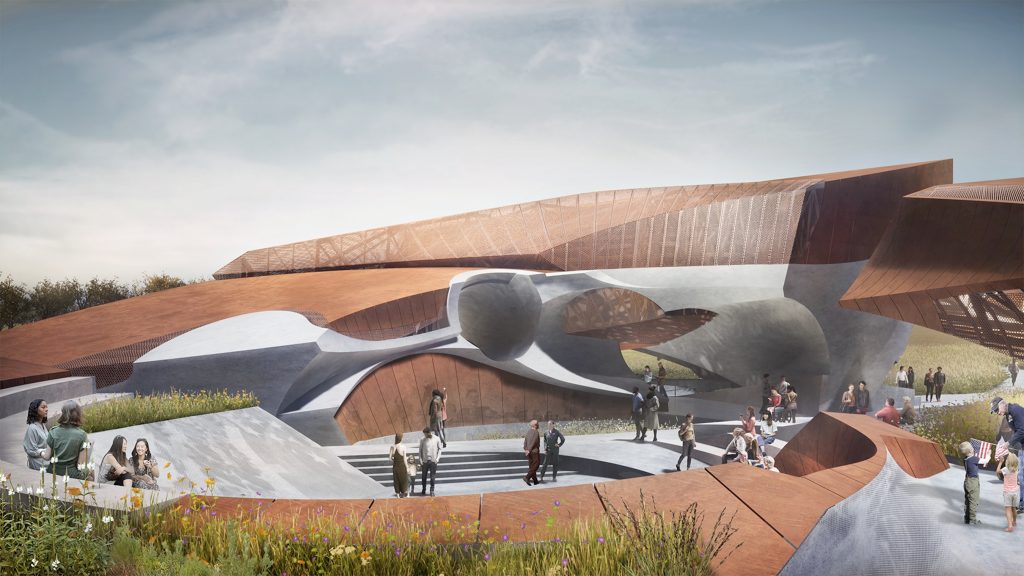
Winning entry for the 2022 Cold War Memorial Competition ©Oyler Wu Collaborative
In a country that prizes the open competitive process for ideas in numerous sectors, and has instead supplanted it in the area of architecture and planning with a star architect system; the system resembles something that is antithetical to our notion of democracy. Granted, the trend toward invited competitions throughout the world has also seen the numbers of open competitions reduced to a trickle. But in the case of EU members, the architectural associations have recognized and promoted the notion that open architecture competitions are important, not only to the health of the profession, but the quality of design. Have we heard any objections by the American Institute of Architects concerning the unscrupulous treatment of architects by clients in this country? And that trend is worsening: in 2022 we only were able to find two well administered open competitions for real projects in the U.S. for publication. Last year it was zero. This is not great news for someone in this country interested in pursuing architecture as a profession.
For more information on the evolution of the competition process worldwide:
https://crc.umontreal.ca/en/sdm_downloads/chupin-jean-pierre-g-stanley-collyer-young-architects-in-competitions-when-competitions-and-a-new-generation-of-ideas-elevate-architectural-quality-2/



























